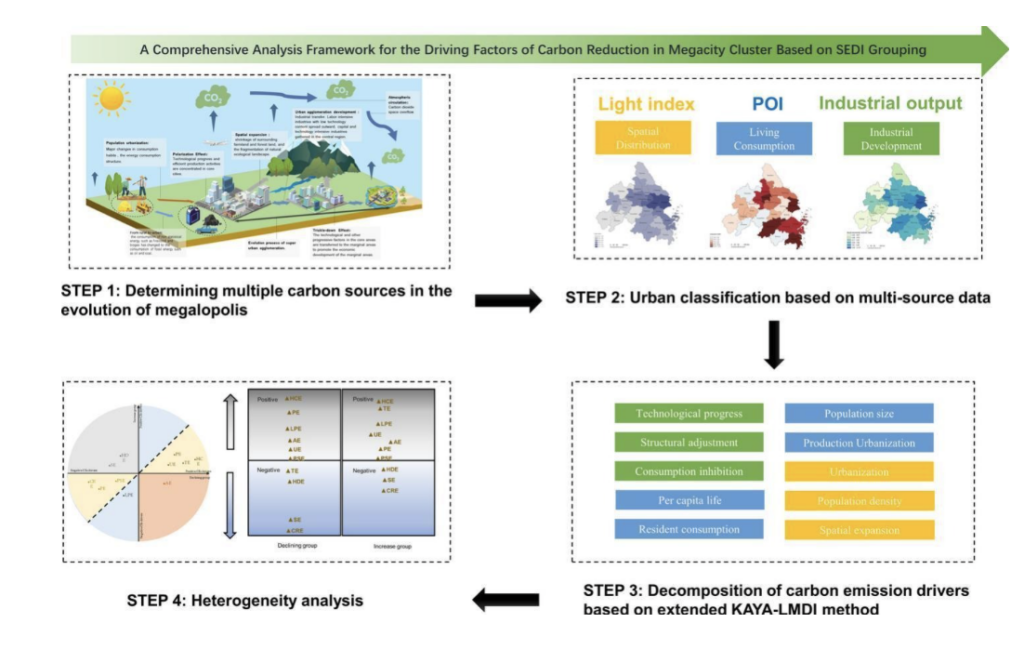https://english.cas.cn/newsroom/research_news/life/202309/t20230907_336139.shtml
In a study published in Science of the Total Environment, researchers from the Xishuangbanna Tropical Botanical Garden (XTBG) of the Chinese Academy of Sciences and Hohai University proposed a new method to calculate urban socioeconomic development indexes using a variety of data sources. Based on the lighting index, business point of interest (POI) data and output value, the researchers obtained an urban socioeconomic development index for the Yangtze River Delta YRD. Based on this index, they classified YRD urban units into core cities, transitional cities, and peripheral cities based on this index.
Using extended Kaya index decomposition models, they evaluated the effects of regional industrial growth, consumer markets, and spatial expansion on urban CE. They then examined differences in the drivers of CE between and within these categories of cities. They found that the key to reducing emissions in core cities lied in residents’ market consumption, while peripheral cities had greater potential for CE reduction in terms of industrial upgrading and spatial layout.
For the YRD city cluster as a whole, resident market consumption was the most important driver of CE in the YRD megacity cluster, followed by spatial expansion. Industrial transformation and upgrading reduced CEs. Various factors influenced intra-group differences in CE intensity, including industrial structure, population density, per capita living effect, spatial expansion effect, population size effect, urbanization effect, and consumption inhibition effect, etc.
“Residents’ consumption was the most important factor of CE in most cities. The authors conclude that promotion of forward-looking green low-carbon consumption is required to minimize the impact of human activities on the environment.


